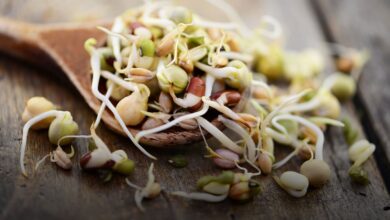How and why do we do Anjaneyasana (Crescent Pose)?

Anjaneyasana, also known as Crescent Moon Pose, is a yoga pose that provides a combination of stretching, strengthening, and opening. This asana takes its name from the mother of the Hindu god Hanuman, Ajani, also called Anjaneya.
This yoga pose allows for a deep stretch of the hips and quadriceps, promoting flexibility and better mobility in these key areas of the body. By bending the front knee and engaging the quadriceps, glutes, and core muscles, Anjaneyasana strengthens the legs and core muscles, helping to improve stability, balance, and overall posture. By strengthening the back and core muscles, this pose also helps correct and improve posture by reducing muscle tension and imbalances.
This asana can help in strengthening the internal organs like the stomach and improving digestion. It can help relieve chronic pelvic pain in women.
A distinctive feature of Anjaneyasana is the raised arm pose that opens the chest and stretches the muscles of the upper body. This promotes better breathing by allowing a more complete expansion of the rib cage, and creates a feeling of relaxation and release of accumulated tension in the heart area. By opening the heart and chest, this pose can also stimulate feelings of confidence and openness, promoting self-esteem and determination.
Besides the physical benefits, Anjaneyasana is associated with Hanuman, a symbol of devotion and inner strength in Hindu mythology. By practicing this pose, you can tap into this energy and develop your self-confidence and determination to overcome obstacles. It can help you develop a positive attitude and deal with life's challenges with courage and resilience.
Illustrative credit © Aliaksandr Makatserchyk
- Begin in Tadasana, in a standing position, feet together, hands beside the body.
- Take a large step forward with your left leg, keeping your foot flat on the floor.
- Bend your left knee slightly, aligning your ankle with your knee. Your right leg remains slightly bent back.
- Place your hands on your hips and straighten your torso.
- Push with your hands to move your hips down and forward.
- Inhale deeply and raise your arms above your head, extending your fingers toward the sky.
- As you exhale, lower your torso forward, bending your left knee and keeping your knee in a straight line with your ankle.
- If you like, you can tilt your torso back slightly to intensify the stretch.
- Maintain this position for 30 seconds to 1 minute, breathing deeply.
- To return to the starting position, inhale and push with your left foot to return to the standing position.
- Repeat on the other side, switching legs.
Training tips
- Step your foot back enough so that the heel of your foot is higher than the ball of your foot.
- Work on improving your hip mobility to achieve better posture in low lunges.
- If you have difficulty maintaining balance, you can place your hands on your hips or on a stable support. You can also keep your hands on the floor or place them on yoga blocks or blocks on either side of your front foot.
- To reap the full benefits of anjaneyasana, try to practice it regularly. Incorporate this pose into your yoga sequence or create a specific exercise to work on strength and flexibility in your hips and legs.
- After practicing Anjaneyasana, take a few minutes to lie on your back in Savasana (Corpse Pose) to allow your body and mind to relax and integrate the benefits of the pose.
contraindications
It is important to note that Anjaneyasana, although beneficial, has certain aspects that may not be suitable for everyone. For example, people who suffer from headaches, lower back pain, or neck pain are not recommended to practice this pose. Likewise, people suffering from abdominal hernia, high blood pressure or heart problems should refrain from practicing this pose. If you have recently suffered an injury or surgery, it is also best to avoid this asana. If in doubt, talk to your yoga teacher.
How and why do we do Anjaneyasana (Crescent Pose)?


